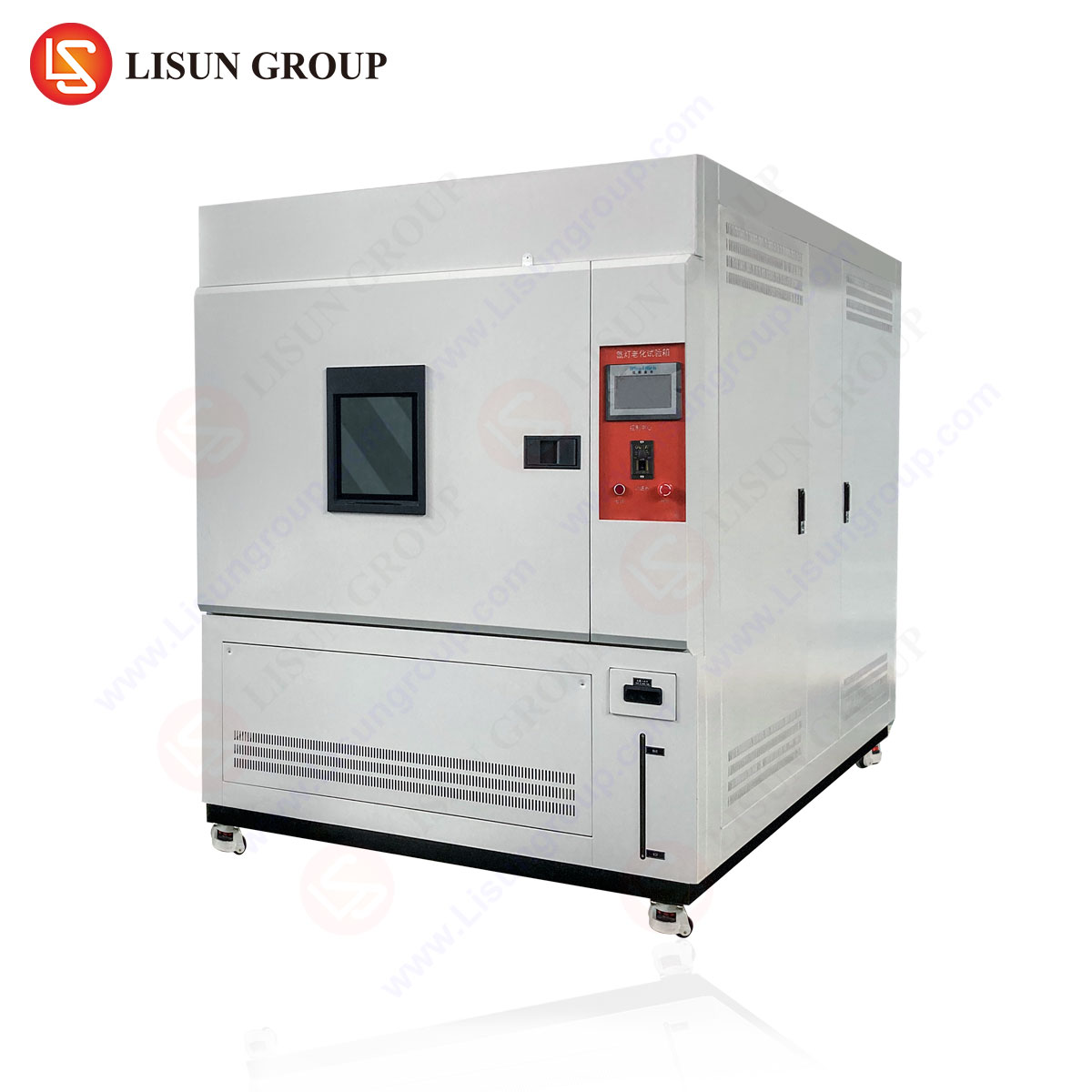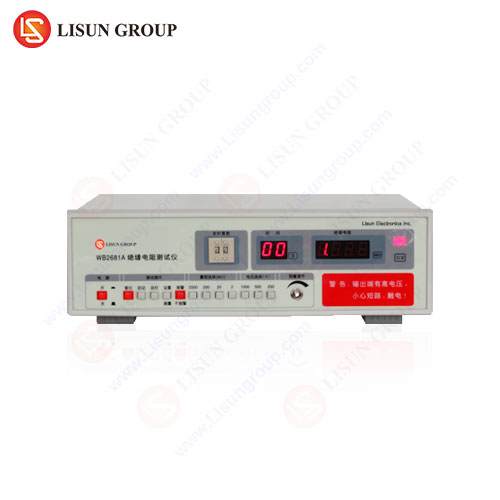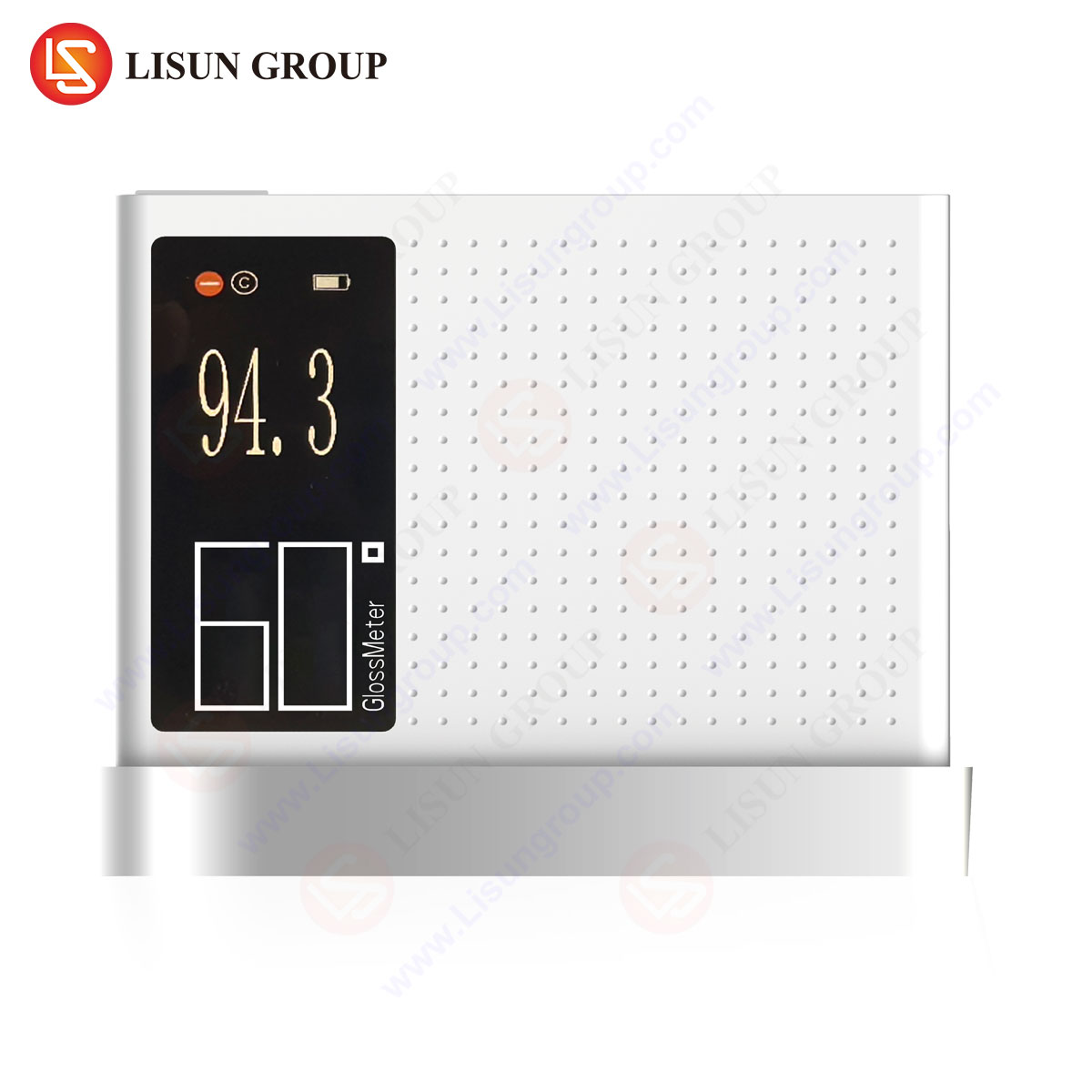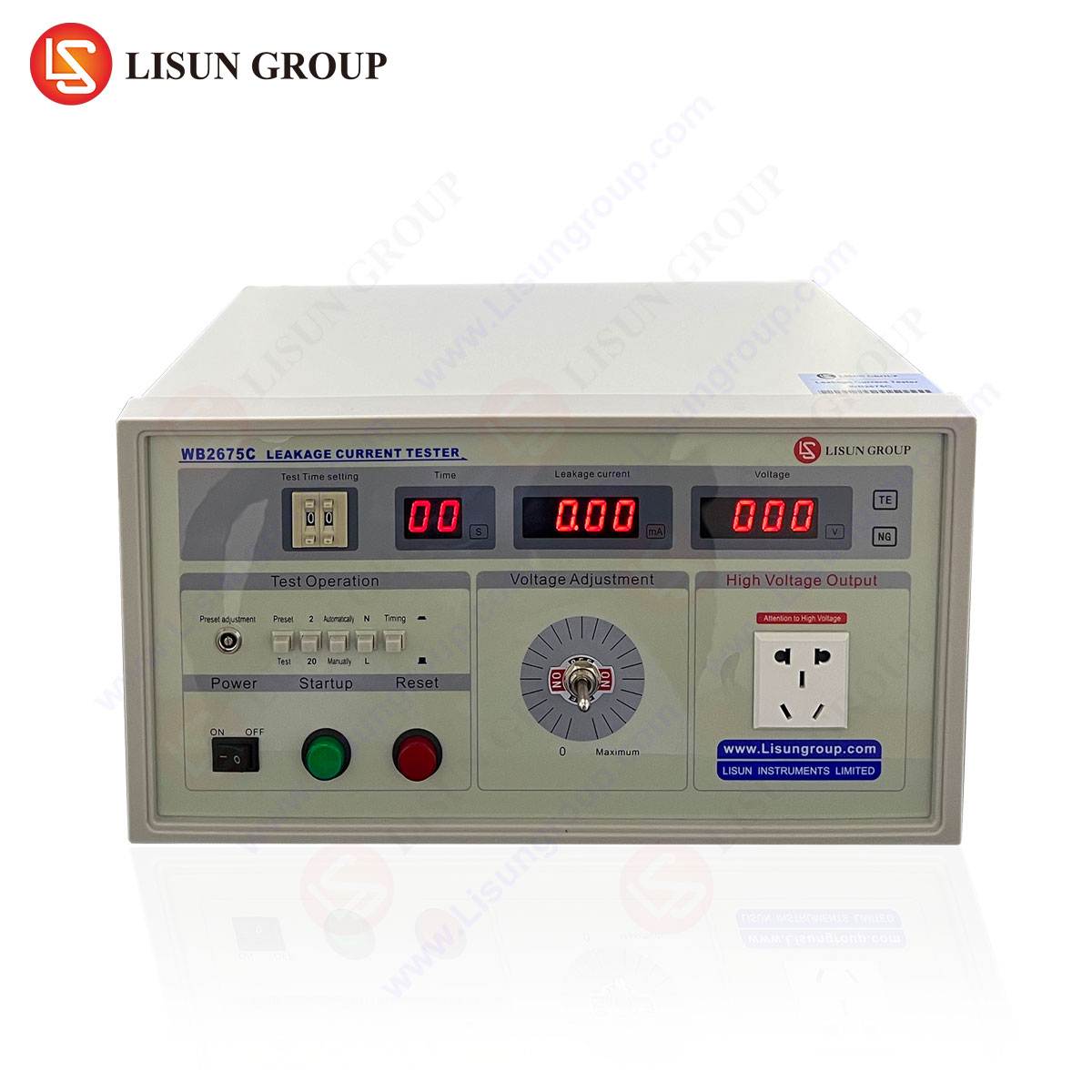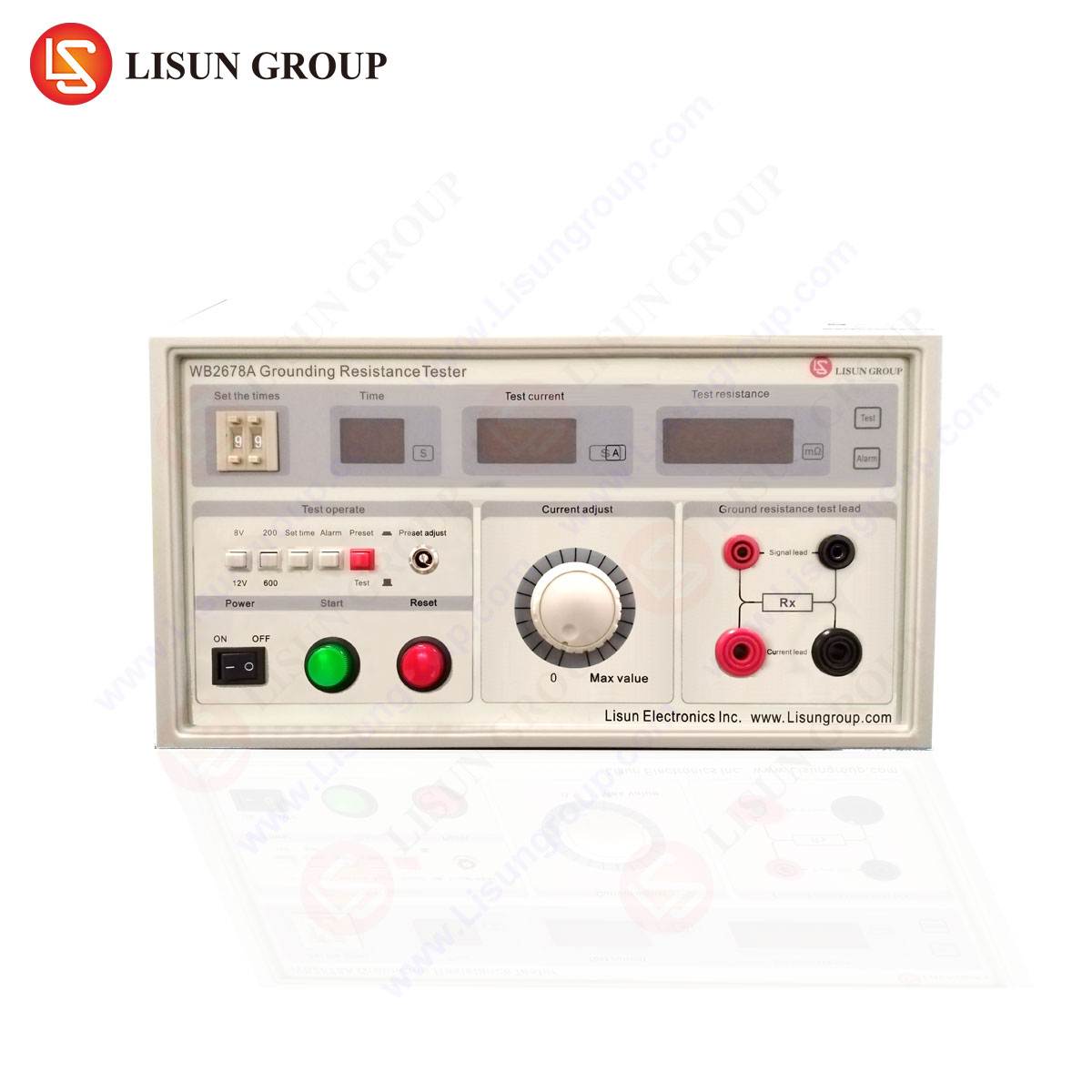Fundamentals of Dielectric Voltage Withstand Testing
The Dielectric Voltage Withstand (DWV) Test, also known as the hipot test (high potential test), is a critical electrical safety evaluation performed to verify the insulation integrity of electrical and electronic components. This test subjects the device under test (DUT) to a voltage significantly higher than its normal operating voltage to ensure no breakdown or excessive leakage current occurs. The primary objective is to assess whether the insulation can withstand transient overvoltages, thus preventing hazardous conditions such as electric shock, short circuits, or fire risks.
Two primary methodologies exist: AC withstand voltage testing I DC withstand voltage testing. AC testing is more common for household appliances and power distribution systems, while DC testing is preferred for high-capacitance loads like cables and semiconductor devices. The selection depends on industry standards, product specifications, and the nature of the insulation material.
Zasady i metodologia testowania
The DWV test applies a predetermined voltage between conductive parts and insulation barriers for a specified duration, typically ranging from 1 to 60 seconds. The test voltage is determined by international standards such as IEC 60950, IEC 61010, UL 60950-1, and ANSI/AAMI ES60601-1, which define safety requirements for various industries.
Key parameters include:
- Test Voltage: Usually 1.5 to 3 times the rated voltage, depending on the standard.
- Leakage Current Threshold: Must remain below a defined limit (e.g., 5 mA for medical devices).
- Ramp Rate: Gradual voltage increase to avoid transient spikes.
- Dwell Time: Duration at which the voltage is sustained.
Failure modes include insulation breakdown, arcing, or excessive leakage current. A well-designed test system must detect these anomalies without damaging functional components.
WB2671A AC/DC Withstand Voltage Tester: Technical Specifications
Ten LISUN WB2671A is a precision instrument designed for comprehensive AC/DC hipot testing, catering to industries requiring stringent electrical safety validation. Its advanced features ensure compliance with global standards while optimizing testing efficiency.
Kluczowe specyfikacje
- Voltage Range: 0–5 kV AC / 0–6 kV DC
- Dokładność: ± (3% of reading + 5 V)
- Leakage Current Range: 0–20 mA
- Czas trwania testu: 1–999 seconds (programmable)
- Ramp Time: Adjustable (1–999 seconds)
- Arc Detection Sensitivity: ≤ 5 mA (adjustable)
- Standardy zgodności: IEC 61010, UL 3111, EN 50191
Przewagi konkurencyjne
- Dual-Mode Operation: Supports both AC and DC testing, eliminating the need for separate devices.
- Real-Time Monitoring: High-resolution display for voltage, current, and test status.
- Programmable Sequences: Enables automated multi-step testing for complex validation protocols.
- Safety Interlocks: Prevents accidental exposure to high voltage during operation.
Zastosowania i przypadki użycia w przemyśle
Sprzęt elektryczny i elektroniczny
Manufacturers of power supplies, transformers, and circuit breakers rely on the WB2671A to verify insulation resistance under high-stress conditions. For instance, switchgear assemblies must endure transient overvoltages without dielectric failure.
Urządzenia gospodarstwa domowego
Products like refrigerators, washing machines, and microwaves undergo mandatory hipot testing to comply with IEC 60335. The WB2671A ensures compliance by detecting insulation weaknesses in motor windings and control circuits.
Elektronika samochodowa
Electric vehicle (EV) components, including battery management systems and charging ports, must withstand high-voltage surges. The tester’s DC mode is particularly suited for EV insulation validation.
Urządzenia medyczne
Per IEC 60601-1, medical equipment such as MRI machines and patient monitors must pass rigorous dielectric tests to prevent leakage currents that could endanger patients.
Lotnictwo i kosmonautyka
Avionics systems and wiring harnesses are subjected to extreme environmental conditions. The WB2671A’s high-accuracy measurements ensure reliability in critical flight systems.
Standards and Compliance Considerations
Different industries mandate specific test conditions:
| Standard | Aplikacja | Napięcie testowe |
|---|---|---|
| IEC 60950-1 | IT Equipment | 1.5 × rated voltage + 1000 V |
| IEC 61010-1 | Laboratory Equipment | 2 × rated voltage + 1000 V |
| UL 1598 | Oprawy oświetleniowe | 1000 V + 2 × operating voltage |
| IEC 60664-1 | Insulation Coordination | Based on pollution degree |
Non-compliance risks product recalls, legal penalties, and safety hazards. The WB2671A’s pre-programmed test profiles simplify adherence to these regulations.
Best Practices for Reliable Testing
- Pre-Test Inspection: Verify DUT cleanliness and dryness to avoid false failures.
- Proper Grounding: Ensure the test setup minimizes electromagnetic interference.
- Gradual Voltage Application: Use ramp-up functions to prevent insulation stress.
- Post-Test Verification: Confirm no latent damage occurred post-testing.
Sekcja FAQ
Q1: What is the difference between AC and DC hipot testing?
AC testing evaluates insulation under alternating current, simulating real-world conditions. DC testing is used for high-capacitance loads, as it avoids capacitive charging currents that could mask true leakage.
Q2: How does the WB2671A enhance testing safety?
It incorporates arc detection, emergency stop functions, and automatic discharge to protect operators and equipment.
Q3: Can the WB2671A test flexible printed circuits (FPCs)?
Yes, its low-current detection capability makes it suitable for delicate electronics like FPCs.
Q4: What industries require dielectric testing most critically?
Medical, aerospace, and automotive sectors demand the highest compliance due to safety-critical applications.
Q5: How often should hipot testing be performed?
Routine testing is recommended during production, with periodic re-testing for long-term reliability assessments.


